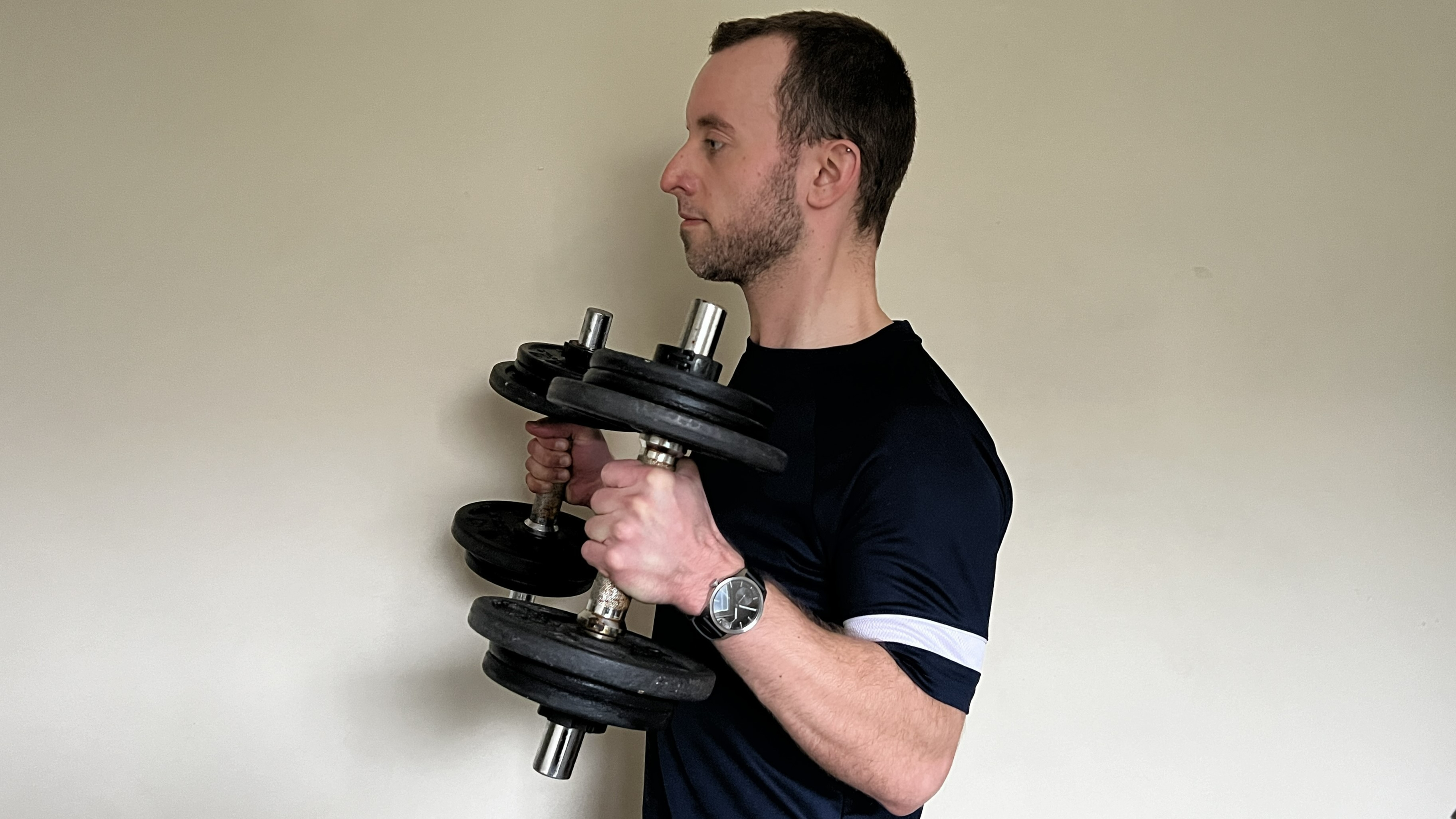I tried this 8-move full-body dumbbell workout, and I felt stronger in just 25 minutes

I like incorporating exercise into my day. A few years ago, I switched the gym for home workouts and long dog walks in the park, but it’s not always easy to find a short routine that’ll challenge my muscles and doesn’t take too long either.
Usually, I’m on the lookout for a session I can do with my adjustable dumbbells, as I only have them and a kettlebell at home, and I don’t mind if I need to change the load a couple of times between moves to effectively work my muscles but keep good form in each exercise.
Then I came across this short resistance training routine from personal trainer Chris Heria. There are just 8 moves, and each one takes around a minute, so you can do three rounds in 25 minutes. This seemed ideal, so I picked up my weights and gave it a go.
As Heria explains, it’s suitable for beginners and experienced lifters as you can adjust the intensity by increasing the number of repetitions, training with a heavier weight, or reducing the rest between moves. Plus, he demonstrates each one, so you can perfect your form before you start.
Watch Chris Heria’s 8-move full-body workout
The session starts with a brief warm-up — 15 push-ups. This might not seem like a lot, but push-ups are a great full-body exercise, helping work muscles in your upper and lower body, and engaging your core, the collection of muscles around your stomach.
You’ll then launch into the 8-move workout, starting with dumbbell goblet squats and finishing with overhead triceps presses. Heria sets a rep goal for each exercise, but you’ll generally train for 45 seconds, take a 15-second break, then start on the next move. Aim to repeat the circuit three times.
1. You don’t have to stick to the rep target
Although Heria bills this as a beginner-friendly routine, you jump straight into a round of 25 goblet squats. Even though I exercise regularly, it’s still a substantial target, and by the end of the first round, my legs were starting to burn.
Get instant access to breaking news, the hottest reviews, great deals and helpful tips.
By the third circuit, I dropped down to 20 goblet squats and cut several reps from the other moves. I used to think this meant I’d failed, but it’s better to do fewer reps with proper form than allow my technique to slip and potentially hurt myself. Even with these changes, it was an effective workout.
2. Form is everything
I’m partial to a bit of yoga, and the practice really helped me see how small changes to my posture could affect the pose. The same is true for strength training workouts too, so it’s important to be mindful of how you do each repetition.
There were a few times when I could feel my back arch during the hammer curls, and it was a good reminder to keep my back flat and engage my core instead. Heria also reminds you to squeeze the muscles around your shoulders during the rear delt flyes to work the muscles correctly.

3. I still don’t enjoy sit-ups
I have a medical condition that affects my blood pressure, and building a stronger core is one of the most effective ways to manage it. Plus, your core connects your upper and lower body and helps improve your balance and posture, so I know it’s worth focusing on.
Despite that, I don’t like some of the more traditional core exercises like sit-ups and crunches. Heria uses a sit-up variation (chair sit-ups) to keep things interesting, but by the end of the first round of 30 reps, I really wasn’t looking forward to the next two sets.
We all enjoy different things though, so if you’re a fan of sit-ups, this move is ideal. But if you’re like me, you could switch them for one of these dumbbell abs moves instead. They’re just as effective for building core muscle but you’ll do fewer reps too.
4. It got my heart racing
15 seconds isn’t a lot of rest. By the time you’ve taken a few deep breaths, it’s time to start the next exercise. Of course, if you need longer, all you need to do is pause the workout. However, keeping up the intensity helps raise your heart rate and burn energy, even during a short session.
It’s an exercise style known as high-intensity resistance training (HIRT), which is similar to high-intensity interval training (HIIT), but focused on muscle-building moves rather than cardio exercise. So, you work your muscles hard and get the cardiovascular boost too.
By the end of the third round, it took a few minutes to catch my breath and get my heart rate back down to normal levels. But I love using HIRT, as it’s an efficient way to pack a workout into a busy day and still get results, and that works for me.
More from Tom’s Guide
- I tried Chris Hemsworth's 15-minute full-body resistance band workout — here's what happened
- Build full-body muscle in just 30 minutes with this 8-move dumbbell workout
- Forget push-ups — these 5 dumbbell exercises chisel defined pecs, triceps and shoulders

James is Tom's Guide's Buying Guide Editor, overseeing the site's buying advice. He was previously Fitness Editor, covering strength training workouts, cardio exercise, and accessible ways to improve your health and wellbeing.
His first job at as a sales assistant in a department store, and this is where James learned how important it is to help people make purchasing decisions that are right for their needs, whether that's a fountain pen to give as a gift or a new fridge for their kitchen.
James is an advocate for sustainability and reparability, and focuses his reviews and advice through that lens to offer objective insights as to whether a specific product or service will be right for your needs.

